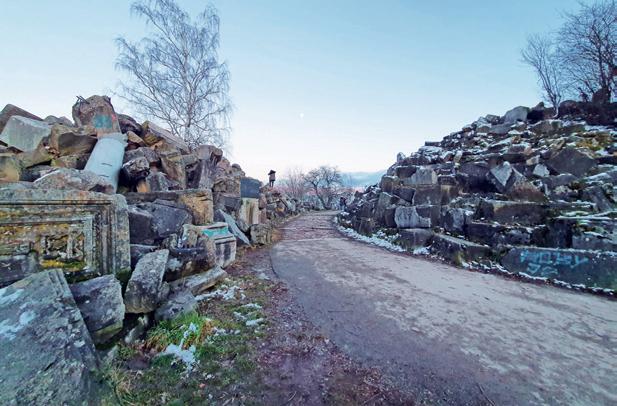
3 minute read
Stuttgart’s Birkenkopf, or “rubble hill,” mixes leisure, scenery, history
Story and photos by Bardia Khajenoori, U.S. Army Garrison Stuttgart
In the immediate aftermath of World War II many German cities were left in ruins and drowning in rubble. Extensive Allied bombing had destroyed swathes of urban centers, and when rubble couldn’t be used in rebuilding, one strategy was to accumulate it into a ‘schuttberg,’ or debris hill.
In Berlin, the well-known Teufelsberg (home to a U.S. listening station during the Cold War) is one of several ‘schuttberge,’ and Munich’s Olympic Park houses another.
Stuttgart’s most prominent schuttberg is called Birkenkopf, or literally ‘birch head.” The nearly 1,700 foot tall hill is located about halfway between Patch and Robinson Barracks, with more than 53 million cubic feet worth of rubble adding 131 feet to its previous height.

The site, a destroyed Nazi antiaircraft battery, was chosen due to existing environmental damage and easy access to the city center through streetcar tracks, according to the Stuttgarter Zeitung.
Even though it is the highest point in the city center, it can blend in with the surrounding hills and forests. “I’d probably driven past it so many times before I actually knew what was there,” said Ryann Hangsleben, USO Stuttgart center manager.
Hangsleben and the USO highlighted the site in a Facebook video toward the start of the pandemic in 2020 as an example of a possible leisure activity as lockdowns first took hold.

The rubble from WWII can be seen during your hike to the top of Birkenkopf.
“I used to take my dogs out there and walk the hills because it’s an easy hike and very scenic,” said Hangsleben, referring to the panoramic view of the city and region.
But here, the ruins aren’t just buried under the ground—they are also stacked up on display at the top.
“You can walk through it on both sides. It goes over your head, there’s writing on there, and you can try and identify what parts of a building it might be,” said Hangsleben.

The ‘writing’ refers to a plaque affixed to a stone with a message in German: “This hill, after the Second World War, built up from the ruins of the city, stands in memory of the victims and as a warning to the living.”
The view at the top of Birkenkopf is higher and unlike any other natural scenic lookout point in the city, but to get to it, you’ll first pass through some of the rubble which contributes to its considerable height, left exposed for effect.
Despite a somber tone stemming from its history, the hill is a popular local leisure destination. Its small parking lot, which lies between roads splitting into the directions of Stuttgart-North and Stuttgart-West, is often busy, and it’s also accessible by frequent bus service. It is also popular with picnicking families as much as hikers and bikers; children often enjoy climbing on top of segments of exposed rubble.

The rubble from WWII can be seen during your hike to the top of Birkenkopf.
“We have four boys who are six and under, and there’s so much there… like lion heads on giant rocks,” said Jasmine McGraw. “Even though it’s something historic, we’re not walking through a museum; they enjoy that they can actually touch parts of history.”
For many, the site also holds a spiritual dimension. A local pastor erected a cross at the summit of the then-unfinished hill in 1953, and first held an Easter service shortly thereafter; services have been held on a regular basis ever since.
McGraw’s family has made visits to the hill a sort of tradition, too.
“For us, it’s really a testament to God’s faithfulness, especially during times of trial,” said McGraw, who said she was recommended the site as a children’s activity and wasn’t aware of the large steel cross, which graces the hills summit.

Being able to look over the city, recognizing the devastation of the past and the prosperity of the present, offers McGraw hope.
“God causes the sunrise over Stuttgart every morning,” she said. “Even in the midst of what seems to be taking forever, for things to get back to normal, that things will be good again.”
Astrid Riehle, a pastor quoted in the Stuttgarter Zeitung from her Easter service in April 2021, drew a similar parallel. The hill, with its growth spurred by the piling of rubble, “can be considered a symbol of the resurrection of a city and of life.”





